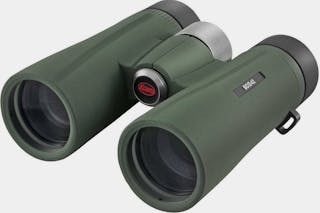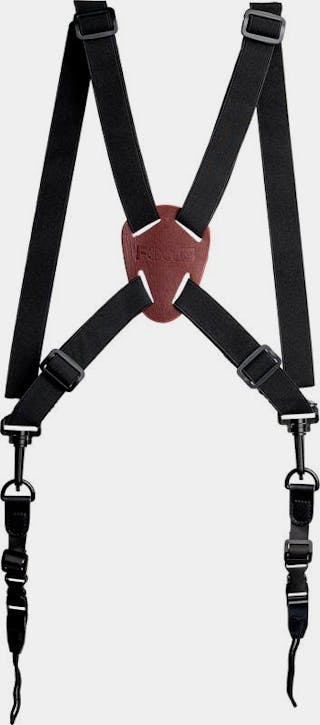Binoculars and Spotting Scopes for Outdoor Enthusiasts
What Do the Numbers on Binoculars Mean?
When referring to binoculars, there’s always a number combination, such as 8 x 21 or 10 x 42. The first number indicates the magnification power, while the second number refers to the diameter of the objective lenses.
Magnification
A high magnification sounds appealing. In practice, we recommend 6x to 10x magnification for handheld binoculars. The effect is similar to zooming with a camera: the more you magnify the image, the more sensitive it becomes to hand shake. With magnifications over 10x, hand movement makes the image blurry, so binoculars with high magnification are best used with a tripod or a “Finnstick.” Magnification also affects low-light performance. Binoculars with high magnification are difficult (and expensive) to make effective in low-light conditions.
Objective Lens Diameter
This number affects the size of the binoculars but also their low-light performance: small objective lenses do not gather enough light to work well in dim conditions. The best low-light binoculars have lenses of at least 50 mm. Even 42 mm lenses offer significantly better low-light performance than compact binoculars with 20 or 25 mm lenses. The diameter is a bit like the width of a pipe: it affects the cross-sectional area “to the second power” — in other words, a 42 mm lens gathers 72% more light than a 32 mm one.
What Kind of Binoculars Should You Buy?
For hiking, compact binoculars are a good choice. They are easy to carry and perform well in bright conditions. A magnification of 6x to 10x is ideal. For birdwatching and other active use, we recommend binoculars with 8x to 10x magnification and an objective lens diameter of 32 to 50 mm. For boating, waterproof binoculars are ideal, and the magnification should not exceed 7x. Since larger binoculars are easy to carry on a boat, a 50 mm objective lens is a good size.
What Affects the Price?
When choosing binoculars from our selection, you get what you pay for: budget models are suitable for occasional use in dry, bright conditions. They help identify a bird sitting in a nearby tree. As the price increases, image sharpness, color reproduction, and brightness improve, the field of view expands, and the binoculars become waterproof and compatible with eyeglasses. More expensive binoculars last longer in harsh conditions and maintain a bright image year after year because they are dustproof. The lenses in the cheapest binoculars may lose up to 55% of incoming light, while in the most expensive models, the loss is only about 5%.
Waterproofing
Waterproof binoculars prevent problems not only when dropped in water but also in foggy conditions or when temperature changes cause moisture to condense on the binoculars. Waterproof binoculars are also dustproof. Over the years, regular binoculars accumulate fine dust inside, which inevitably degrades image quality.
Light Shields/Eye Cups
When binoculars have fold-down or twist-down light shields (eye cups), eyeglass users can use the binoculars without removing their glasses. Simply fold the shields down and place the binoculars in front of your glasses. There are significant differences between binoculars here: the wider the field of view, the better they work with glasses.
Low-Light Performance
If you want binoculars that perform well in low light, choose ones with large objective lenses and low magnification. For example, 7x50 binoculars are significantly better in low light than 8x32 binoculars, provided they are in a similar price range. Compact binoculars with small lenses work well only in daylight.
Porro Prism or Roof Prism?
In Porro prism binoculars, light makes a bend, meaning the tubes are not straight, giving them a “traditional” appearance. Porro prism binoculars are cheaper to manufacture, so you may get better value for your money compared to roof prism binoculars in the same price range. Roof prism binoculars, however, are more compact and easier to carry.















































